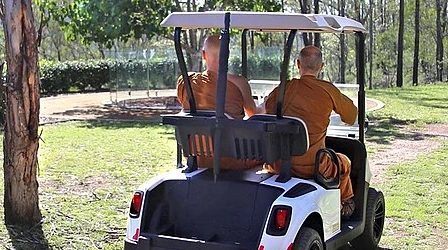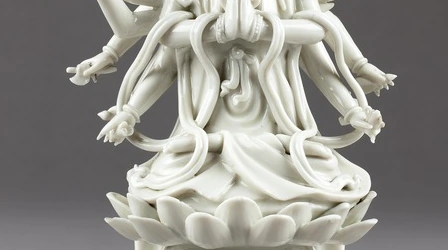Modern Buddhism
Subscribe to this topic via: RSS
How Buddhists remade Buddhism in response to modernity.
Caution! Under Construction
Please be aware that this tag is still under construction and as such is missing information and may be changed or removed at any time. For all the content under consideration for this tag, see the “Modern Buddhism” folder on Google Drive.
Table of Contents
Books (22)
Featured:
-
⭐ Recommended
When we adopt a Buddhist perspective on the wounds that afflict our world today, we soon realize that these wounds are symptomatic: a warning signal that something is fundamentally awry with the way we lead our lives.
See also:
Readings (81)
Featured:
-
⭐ Recommended
Embarrassed the organizers were indeed, even dismayed, when they were showered with fervent thanks from the women participants for organizing such a wonderful spiritual experience…
-
⭐ Recommended
Just as a river is geographically conditioned to flow in a certain direction, [compassionate] efforts are predetermined to move toward success (as sentient beings are endowed with Buddha nature). But just as a river will never dry up, their project will never end.
-
⭐ Recommended
Even as Vajirayan criticized the supernaturalism of indigenous Siamese religious forms, certain ideas and practices were left intact. In particular was a focus on karma or merit and morality…
-
⭐ Recommended
Sōtō Zen temples in Japan kept necrologies in which the ancestors of outcaste members of their congregations were clearly identified, sometimes by derogatory titles such as “beast” or “less than human.” Indeed, Sōtō priests routinely allowed access to these memorial registers by private investigators, who perform background checks to insure that prospective marriage partners or company executives do not come from outcaste families.
-
⭐ Recommended
In response, Buddhist leaders divided traditional Buddhist cosmology and practices into the newly constructed categories ‘superstition’ and ‘religion.’ Superstition was deemed ‘not really Buddhism’ and purged, while the remainder of Buddhism was made to accord with Westernized ideas of ‘religion.’
-
⭐ Recommended
… the evidence found in early printed liturgical booklets that promote Buddha-vandanā points to a different kind of modernization. This article reveals how Buddhist activists in the late nineteenth and early twentieth centuries made use of the capabilities presented in the colonial context, including print technology, to promote this devotional ritual practice as a principal marker of a newly constructed Buddhist identity.
-
⭐ Recommended
Even the remote mountain monasteries have broadened their access to lay visitors. Nowadays monastic and lay Buddhists have more occasions to meet than before and the current intensification of their relationships brings important redefinitions of their respective identities.
-
From the 1920s, Vietnamese Buddhist reformers revitalized their religion, inspired in great part by the Chinese monk Taixu’s blueprint to modernize and systematize sangha education and temple administration, and by his idea of rénjiān fójiào, “Buddhism for this world”
-
Anyone who tries to emulate Buddhadasa, whichever life one has decided to lead, should first remember the authenticity in his life. Authenticity engenders humility because aspiring to any ideal can never be perfectly achieved.
-
This article examines how modern Chinese Buddhism has been influenced by Christianity. For our purposes ‘modern Chinese Buddhism’ refers to a form of what has become known in the West as ‘Engaged Buddhism’, but in Chinese is known by titles which can be translated ‘Humanistic Buddhism’ or ‘Buddhism for Human Life’.
-
The first way to explain this unlikely fusion of merciful religion and a quite merciless modern creed is to remember to what degree the impact of Social Darwinism on early modern Korean intelligentsia was strong and lasting.
-
Watanabe did not envision a radical position for Buddhists on the issue of the ‘labour question’; rather, he imagined Buddhism as a harmonizing influence that could help avoid the pitfalls of unrestrained capitalism, on the one hand, and revolutionary socialism, on the other.
-
… the sudden wealth generated during Taiwan’s period of rapid economic development created a need to give that wealth meaning […] Ciji provided a way of adapting traditional Buddhist rhetoric and imagery to facilitate the move from traditional “almsgiving” to “modern scientific charity.”
-
This study examines the early career of the renowned Buddhologist Lü Cheng as an aspiring revolutionary. My findings reveal that Lü’s rhetoric of “aesthetic revolution” both catapulted him into the center of the New Culture Movement and popularized a Buddhist idealism—Yogācāra—among thinkers who sought alternative social theories.
-
Like an object circling the sun, the visitor senses she is within the gravitational pull of a powerful entity.
-
The founder of Fo Guang Shan is one of the most influential Buddhist monks in Taiwan and around the world. This study examines the biographies of Hsing Yun as depicted in Fo Guang Shan’s popular media to elucidate the uses and significance of Buddhist hagiography in contemporary Taiwan. I argue that unlike the Buddhist hagiographies of earlier times in which eminent monks were depicted as transcendental beings with superhuman powers and spiritual attainments, the informal and intimate portrayals of Hsing Yun in popular media seek to portray the monk as a worldling bodhisattva
-
Within the context of Ravanisation—by which I mean the current revitalisation of Ravana among Sinhalese Buddhists in Sri Lanka—multiple conceptualizations of Ravana are constructed. This article concentrates on two different Ravana conceptualizations: Ravana as a warrior king and Ravana as a healer.
-
The Kandy episode reflects Chulalongkorn’s self-image both as a Buddhist leader—a “defender of the faith”—and as a champion of rationalism. This dual self-fashioning remained an extremely strenuous exercise.
-
It examines how the fascination with marble, which is vernacularly categorized as ‘white jade’ in Chinese, motivated such endeavors and how these icons shaped the perception of a developing Buddhist cosmopolis among Chinese Buddhists by helping them locate Burma in the Buddhist world in a spiritually and materially meaningful way.
-
… two Buddhist responses to rising nationalism and the restriction of freedom of religion and thought
-
… a critical assessment of naturalism and a reevaluation of the most recent forms of Buddhist modernism, including the extraordinary success of Mindfulness. It argues for a more balanced and encompassing approach that would extol the richness of the Buddhist tradition.
21 pages -
Shinnyo-en’s founders and their successors envisioned a particular strategy for being Buddhist in modernity, one which aligns with some, but not all, scholarly characterizations of Buddhist modernism. As a result, Shinnyo-en and other lay organizations have largely remained on the margins of Buddhist studies despite their apparent popularity and proliferation. This article offers a new category for theorizing and positioning such organizations as contramodern—connected with, but divergent from mainstream forms of Buddhist modernism.
-
Orientalist tropes are pervasive in current tibetological work published in China, including articles in purportedly scholarly journals. This work is closely connected with government propaganda, and it is often explicitly directed by members of the government to further agendas of suppression.
-
The introduction to Gems of Buddhist Wisdom shows how many Buddhist evangelists reacted to the challenge of the West, giving a modern “sales pitch” for their religion.
-
The importance of Abhidhamma (higher doctrine) in Myanmar Buddhist society is well known. However, it is only within the last century that this doctrine has become more accessible to the laity, and specifically to women devotees.
-
Founded in Taiwan in 1989, the Modern Chan Society was a community of lay Buddhists that challenged monks’ religious privileges and put forward the idea of equality between monks and lay believers. It asserted an independent authority from that of the monasteries in managing “salvation goods” and accordingly recruited its own clergy.
-
It is remarkable that there was a cosmology in Buddhism twenty-five centuries ago that doesn’t conflict with modern physics.
-
These scholarly nuns elevate the standards of their Buddhist academies and use their original academic specializations to expand the educational curriculum of their school. The role of scholarly nuns in contemporary Taiwan exemplifies that Buddhism provides educational resources for women, as educational resources enhance women’s engagement in Buddhism.
-
Ultimately, then, religions derive their power from the depth of their spirituality. The power of Zen, for example, flows out of Tokusan’s “Thirty Blows” or Rinzai’s “Katsu!!!” or Joshtu’s “Mu” (“Emptiness”). The power of Jodo Shinshu also originates from one single point of absolute depth: from the nembutsu.
See also:
Audio/Video (23)
Featured:
-
⭐ Recommended
 1h 55 m
1h 55 m -

-
… the integral, yet unacknowledged, role that Indians played in the making of modern global Buddhism in the century prior to Ambedkar’s conversion, and the numerous ways that Buddhism gave powerful shape to modern Indian history
1h 40 m -
He is usually understood through the process by which Sri Lanka became independent, by which Sri Lankans who had become Christians returned to their Buddhist origins: an entirely Sri Lankan context. But reading the diaries, I realized he spent 80–90% of his adult life living outside of Sri Lanka.
69 min -
Seeking Śākyamuni: South Asia in the Formation of Modern Japanese Buddhism (2021) – Richard M. Jaffe
How Japanese Buddhists looked West and helped create modern, global Buddhism.
66 min -
The nunneries and monasteries are trying to respond to these critiques and to this question of identity but, as often times with religious institutions, the changes are slower than the changes in the societies around them.
62 min -
 24 min
24 min -
The Buddhist modernizer Taixu was no reluctant translator, but was rather a committed utopian living in a chaotic time.
52 min
See also:

